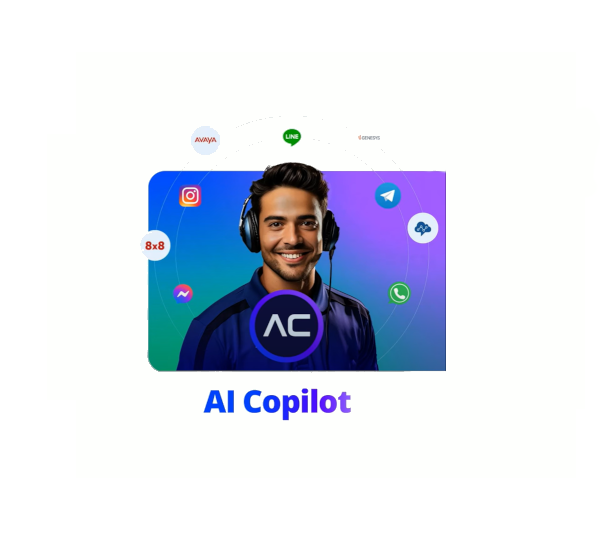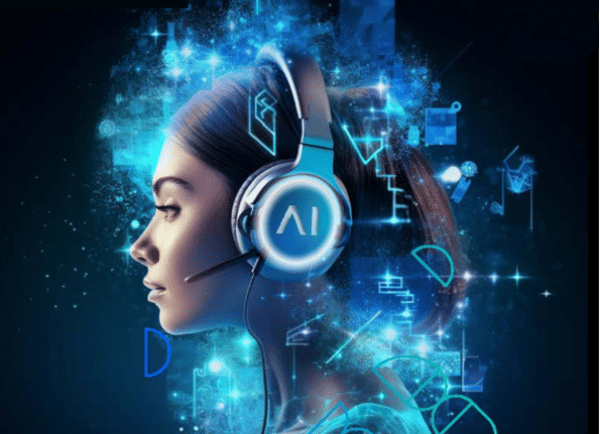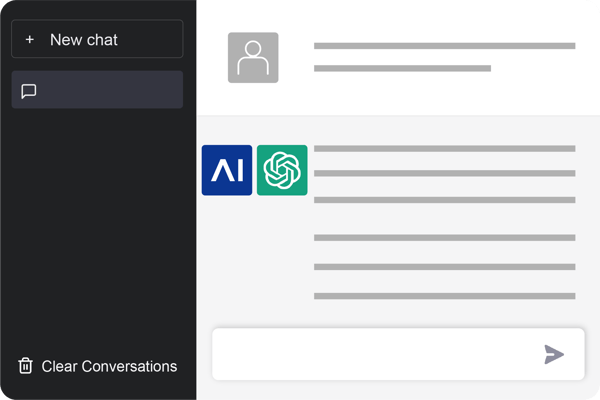Use Cases of Agentic AI in Contact Centers
As we have mentioned repeatedly in this guide, these different types of AI are most beneficial when combined within a platform like Cognigy.AI.
This makes sharing use cases that utilize either Agentic AI or Generative AI a challenge — most use cases will involve both. However, to help you further understand the differences between each type of AI we’ve pulled together use cases that more obviously leverage one or the other, starting with Agentic AI…
Customer Support Agent
The most obvious use for Agentic AI is to build autonomous AI Agents that can act as frontline customer support agents. Before Agentic AI, AI Agents that interacted with customers needed significant work in terms of predetermined intent training, deterministic workflows, and conversation flow predictions.
With Agentic AI, this process becomes far more fluid – instead of building a complex repository of training data with hundreds, if not thousands of intents and the required execution logic, all you need is to specify the goal, persona, and job description of the agent with language prompts. When a customer gets in contact to make their request, an AI Voice Agent will instantly answer the call, understand the query's goal, and then map any actions needed to reach it.
For example, if a customer wanted to take out travel insurance for an upcoming trip to the USA, the agent would first authenticate them by sending a secure code, then share a personalized offer that the customer can browse before completing the transaction. During all this, the AI Agent communicates with the customer to answer queries and progress towards resolution.
This opens up a whole new level of autonomy for customer support roles, allowing enterprises to introduce dedicated AI Agents that can accomplish complex tasks without the need for (or cost of) human involvement.
Outbound Calling
Unlike inbound customer support, where businesses can usually predict the common support needs of customers, outbound calling is far more challenging.
For outbound cases, it’s almost impossible to predict how a customer will receive a call or what they will say. This makes it the ideal place to implement Agentic AI – where progressive reasoning helps create more dynamic agents that can ‘roll with the punches’ and make decisions based on the highly unpredictable responses of call recipients. After all, human communication rarely follows a linear path.
Order Tracking
We’ve covered general customer support usage above, but let’s look at a specific role, too. Order tracking is a common issue for many contact centers and Agentic AI empowers far more effective AI Agents that can not only fetch order details but also take meaningful action designed to resolve the case. In our Agentic AI launch webinar, we shared an example of this exact use case – where a frustrated customer asked an AI Agent for an update on a delayed order.
The AI Agent apologized for the delay and asked for order details, which then failed to return any satisfactory result in the backend system. Rather than simply reporting a failure to the customer, Agentic AI placed them on hold and took action – contacting the warehouse in Hamburg, Germany to ensure a clear resolution and new delivery date.
The scenario above is a true demonstration of the power of Agentic AI. Rather than having to involve a human when it encountered an error, the AI Agent was able to recognize the customer’s frustration, offer reassurance, and then take additional action to provide a quick resolution – all within the same interaction.

.png?width=60&height=60&name=AI%20Copilot%20logo%20(mega%20menu).png)




.png?width=600&height=600&name=Knowledge%20AI%20Feature%20image%20(2).png)










.png?length=100&name=MicrosoftTeams-image%20(5).png)
